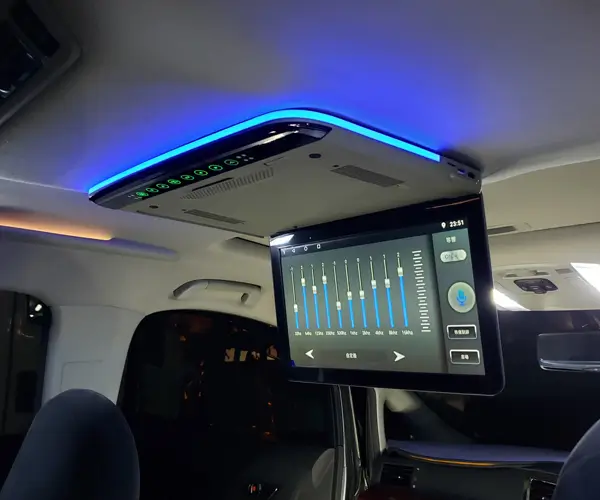part 1:
Unlocking Precision: The Ultimate Guide to DC Servo Motor Circuits
Imagine a world where machines move with pinpoint accuracy, responding seamlessly to commands, adjusting in real-time, and performing complex tasks with grace—this is the power of DC servo motor circuits. These sophisticated systems serve as the backbone of modern automation, robotics, and manufacturing, enabling intricate movements and high-precision control that were once thought impossible.

What is a DC Servo Motor? At its core, a DC servo motor is a rotary actuator designed for precise control of angular position, velocity, and acceleration. Unlike basic DC motors that spin continuously with a fixed speed, servo motors are equipped with feedback mechanisms that continuously monitor and adjust their position or speed, ensuring accuracy and repeatability.
This feedback is what distinguishes a servo motor from simple motors. It typically involves encoders or resolvers integrated into the motor shaft, providing real-time data on the motor's actual position. This data is then used by a control circuit to make necessary adjustments, creating a closed-loop system that maintains exact positioning even under load variations.
Fundamental Components of a DC Servo Motor System A typical DC servo motor circuit involves several critical elements:
DC Motor: The primary actuator that converts electrical energy into mechanical motion. Feedback Device: Usually an encoder, resolver, or potentiometer, providing positional feedback. Error Detector: Compares the desired position (setpoint) with the actual position from the feedback device. Controller: Processes the error signal and determines the corrective action; often implemented using a Proportional-Integral-Derivative (PID) controller. Power Amplifier/Driver: Supplies the necessary current to the motor based on the control signal, often employing H-bridge circuits. Supply Voltage: Powers the entire circuit, typically ranging from 12V to 48V for most applications.
The Closed-Loop Control Principle At the heart of a DC servo circuit lies the closed-loop feedback control system. Here's how it operates:
Command Input: The system receives a desired position or speed input. Error Calculation: The feedback device measures the current position of the motor shaft; the controller computes the difference between the desired and actual positions. Control Signal Generation: Based on this error, the controller generates a control signal—often a PWM (Pulse Width Modulation) signal—that drives the motor. Motor Response: The motor reacts to this control signal, adjusting its position or speed. Feedback Update: The feedback device continually reports the new position, closing the loop and enabling real-time adjustments.
This constant monitoring and adjustment allow the system to correct for disturbances, load variations, or external forces, maintaining high positional accuracy even under challenging conditions.
Designing a Basic DC Servo Circuit Building a simple yet effective DC servo motor circuit involves integrating the above components thoughtfully.
Power Supply: Ensure your power source matches the voltage and current requirements of the motor and driver. Motor Driver Circuit: H-bridge configurations are popular because they allow direction control and PWM speed adjustment. Feedback Mechanism: Select an encoder suitable for your resolution needs; optical encoders are common for high precision. Controller: A microcontroller (like an Arduino, Raspberry Pi, or a dedicated PLC) can be programmed to implement PID control algorithms. Error Detection and Control Logic: Use the microcontroller's ADC (Analog-to-Digital Converter) inputs to read feedback signals, compute error, and output control signals via PWM pins.
Implementing PWM for Motor Control PWM plays a fundamental role in controlling the speed and torque of a DC servo motor. By rapidly switching the motor's supply voltage on and off at a specific duty cycle, PWM effectively manages the average voltage and current delivered to the motor.
A higher duty cycle means more voltage and thus faster or more powerful motor responses. A lower duty cycle results in reduced motor speed or torque.
PWM signals are generated by modern microcontrollers and fed into the driver circuit, controlling the energy supplied to the motor with precision.
Application Examples of DC Servo Motor Circuits
Robotics: Precise joint movements in robotic arms. CNC Machines: Accurate position control of tools. Aerospace: Flight control surfaces with exact positioning. Camera Gimbals: Smooth and precise stabilization.
Challenges in DC Servo Circuit Design While DC servo circuits provide remarkable control, designing them is not without challenges:
Noise and Interference: Electrical noise can disrupt feedback signals, reducing accuracy. Thermal Management: Motors and drivers can generate significant heat, requiring effective cooling solutions. Tuning the PID Parameters: Proper adjustment of control parameters is essential for stable and responsive operation. Mechanical Backlash: Gears and linkages might introduce delays or inaccuracies.
Good design practices and the right choice of components can mitigate these issues, leading to reliable and efficient servo systems.
Once you're ready, I can continue with Part 2, delving into advanced circuit designs, real-world case studies, troubleshooting tips, and future trends in DC servo motor circuits.
Established in 2005, Kpower has been dedicated to a professional compact motion unit manufacturer, headquartered in Dongguan, Guangdong Province, China.




































